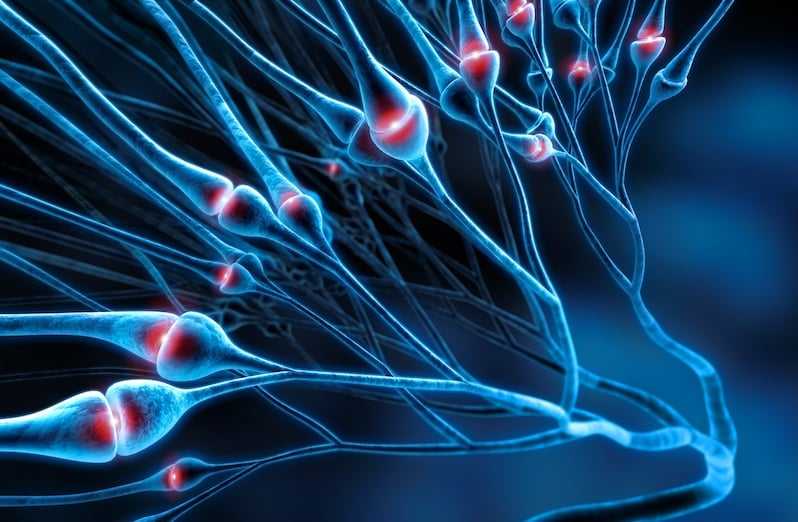The body's cannabinoid system consists of two cannabinoid receptors, CB1 and CB2, their endogenous ligands, which include 2-arachidonoyl glycerol (2-AG) and anandamide (AEA), and the enzymes that regulate the synthesis and degradation of these ligands. While the endogenous cannabinoid system serves naturally to modulate pain transmission, it can be exploited to provide more robust relief, either through administration of agonists at CB1 or CB2 receptors or through inhibition of degrading enzymes to increase endogenous cannabinoid levels.
CB1 receptors are expressed in neurons throughout the central and peripheral nervous system, including in the DRG, where noiciceptor cell bodies reside, the dorsal horn of the spinal cord, and the PAG, all of which are important sites for modulation of pain transmission. CB2 receptors, on the other hand, are not found in the CNS under normal conditions (although they may be up-regulated in nociceptive neurons after injury) and are instead expressed in a variety immune cells and microglia. Although activation of either receptor can promote pain relief, CB1 receptors are responsible for the centrally-mediated psychomimetic side effects that sometimes accompany administration of cannabinoid receptor agonists such as tetrahydrocannabinol (THC).
Both CB1 and CB2 are GPCRs that signal predominantly through Gi/o to decrease VGCC conductance and activate GIRKs to hyper-polarize cells. Therefore, ligand binding to cannabinoid receptors results in decreased release of excitatory neurotransmitters from nociceptive neurons and post-synaptic cells exhibiting decreased excitability for signals they do receive. Activation of cannabinoid receptors on immune cells can similarly inhibit their function and thereby indirectly modulate pain processing. Since CB2 receptors are found primarily on immune cells and microglia, this indirect, anti-inflammatory effect is the primary mechanism by which CB2-selective agonists modulate pain responses.
Cannabinoid agonists have shown efficacy in
acute models such as
tail flick and
capsaicin injection, as well as
carrageenan and CFA inflammatory pain models. Translation from animal models to the human condition has been documented for a variety of neuropathic conditions as well as for post-operative pain relief; therefore, both
neuropathic and post-operative pain models would be appropriate for testing novel compounds designed to target the cannabinoid system as well.




